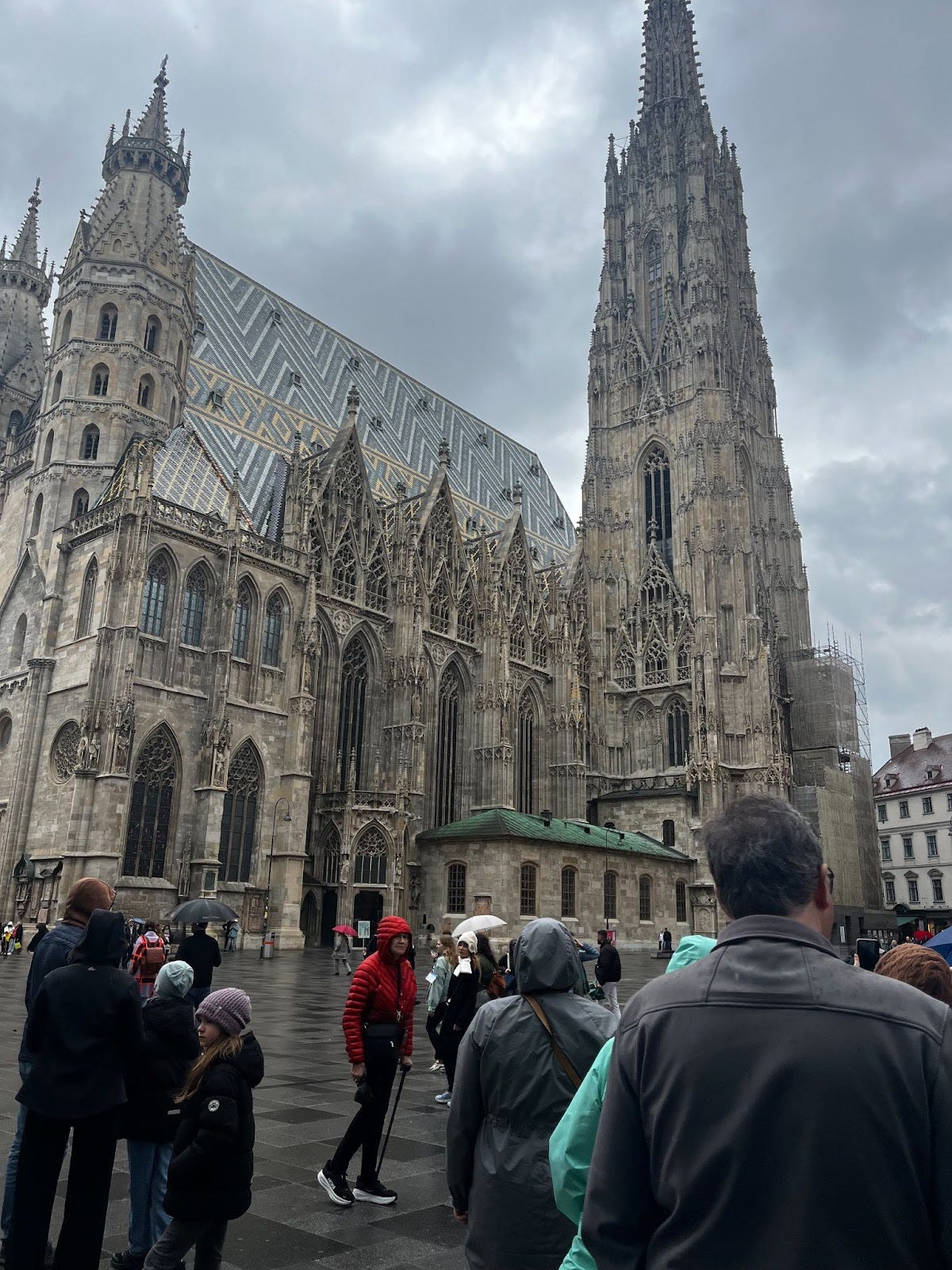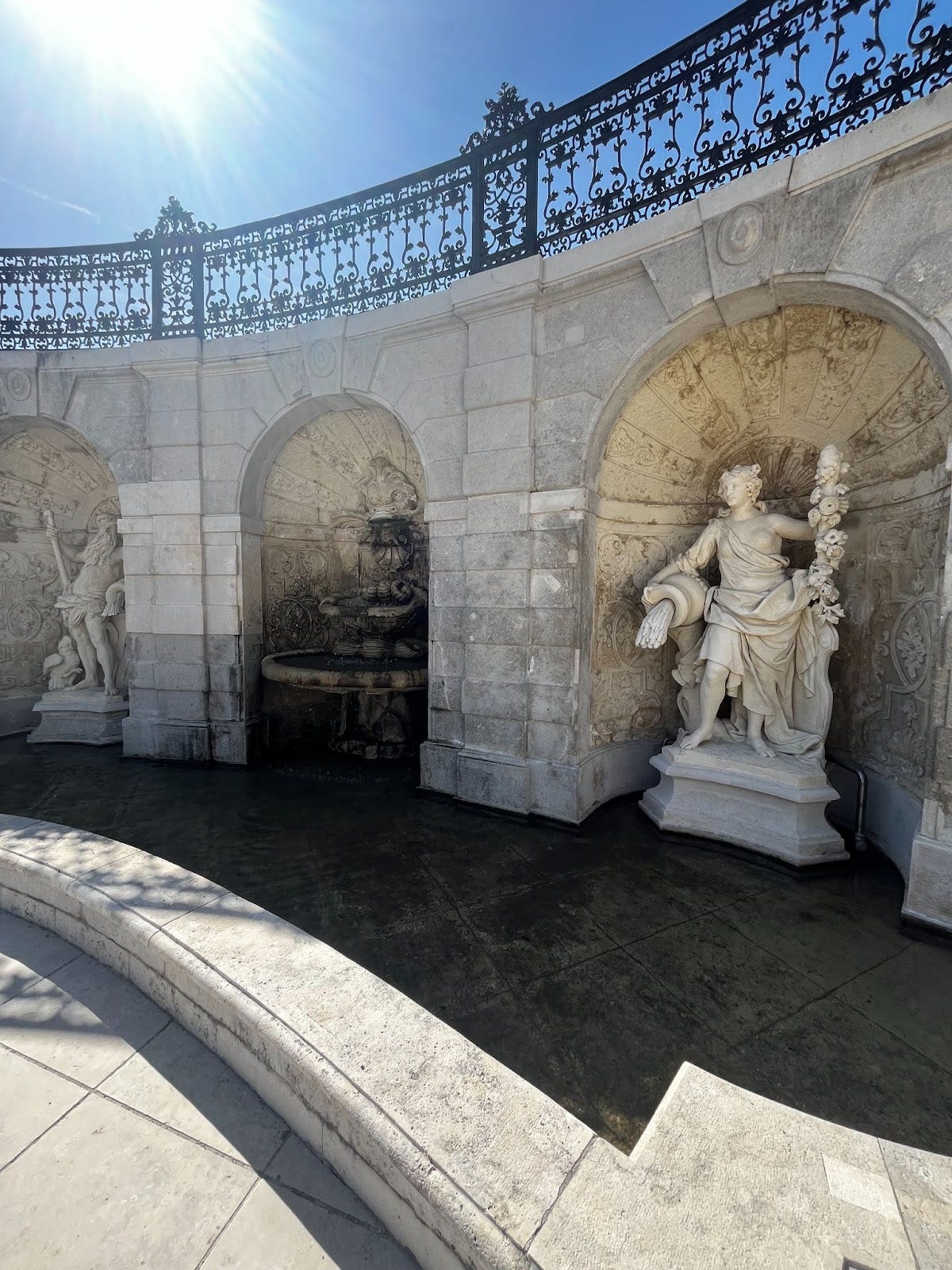I’ve recently returned from a river cruise along the Danube. I was with my husband and a larger group. Each morning we would get off our long boat and take a tour. Most days we got off the ship and started walking along cobblestone streets with a guide into cities that had hundreds of years of history. Without exception we toured a church. These buildings on the outside and inside were testements to the master craftsmen who spent decades working on their construction.
One of our party would say "Oh God not another church!” But I had a different perspective. Churches were a kind of museum for the ordinary people. A place where they could experience beauty and transformation through an artistic vision. An experience that was only available to them by the largesse of a powerful social institution. At least one day a week they were surrounded by art.
As we moved from Germany, in Austria, to Yugoslavia, and finally Hungry, I was fascinated by the aesthetic changes that moved from dark medieval environments to bright light romantic visions of the Baroque, Neoclassical, and Romantic periods. It was a trip within an art history timeline not found in the United States.
In every city, we stopped, and looked at a plague statue, usually found in the center of a square where people would get their water. These statues were tall and thin, and at the top was a representation of the Holy Spirit, or the Trinity, and down below at the base were depictions of the suffering that went on during the period of plague. It made one think about the pandemic. Will we have art that processes the loss? I really wonder about this possibility.
There were statues of famous writers and musicians. What was missing were statues of monarchs. Perhaps there was a figure like Franz Joseph on a horse but nothing that celebrated the era of kings. I noticed there were very few military statues, something which we find many American cities. Perhaps a continent that had experienced the devestation of two world wars didn’t want to romanticize violent conflicts.
When you are a tourist walking around, generally you’re looking at public art. A key feature of public art is that it’s in public spaces that are accessible to everyone. Today public art is more than just sculpture. Murals, digital presentations, and experiences are part of the contemporary landscape.
“The Bean” is a popular nickname for a sculpture created by the Indian born British artist Anish Kapoor. Kapoor named the sculpture “Cloud Gate". Its massive surface includes 168 reflective stainless steel plates that are seamlessly polished and held together to form a giant mirror. The sculpture is 66 feet long, 33 feet high, and 42 feet wide. It weighs 110 times.
Kapoor was inspired by liquid mercury. It’s that stuff inside a thermometer that is reflective and fluid. The effect of the sculpture is not unlike a giant funhouse mirror. Both visitors and the skyline are distorted. Because of its scale, visitors can literally walk underneath the sculpture to become a part of the design for a moment.
The term public art refers to art that is in the public realm, regardless of whether it is situated on public or private property or whether it has been purchased with public or private money.
Public art is found outside in a park or in a space that serves a community, like an airport or subway station. The environment for public art is very different from a gallery or even a museum. Its purpose goes beyond pleasing aesthetics to provoke, celebrate, entertain or heal.
As a textile artist, working with layers and stitching on fabric, I thought I was more or less an observer rather than a participant in public art because the materials I use don’t hold up in these kinds of places. So I searched textiles in public spaces and realized I had completely missed a world wide textile art trend: Yarn Bombing.
Yarn Bombing is also known as guerrilla knitting or yarn graffiti. It’s a recent development in the Art world that has been gaining popularity, beginning in the early 2000s with a group in Texas. Yarn bombing on one level is trying to brighten public spaces and to reclaim public art with a tongue and cheek approach to the often elitist view of public art.
Knitting and crochet presented as fine art elevates the work of the women from the domestic into the world of museum culture. Like art quilting, this movement is challenging the definition of art. A group in Los Angeles called Yarn Bombing Los Angeles, or YBLA covered the façade of the craft and folk art museum with over 12,000 granny squares made by contributors from around the world.
Craftivism is a form of activism that utilizes traditional crafts like knitting, sewing, and embroidery to raise social awareness and promote positive change.
Craftivism includes groups like the “Tiny Pricks Project” on Instagram posting cross stitched political satire. Tens of thousands of women in hand knit pink pussy cat hats gathered together in DC in the first Trump administration as a sign of resistance. It was a huge moment for using craft in a political protest. An earlier (started in 1987) project AIDS Memorial Quilts displayed on the Washington mall had a major impact by humanizing the victims of the disease.
Spanning the National Mall from the Washington Monument to the U.S. Capitol in Washington, The Quilt attracted nearly 1.2 million visitors in October 1996. Over the three-day event, more than 40,000 panels were displayed.
There are now several famous artists using crafts in public art. Fiber artist Olek crocheted a life-size train in Poland, Wrapped a New York City apartment in pink yarn, covered entire buildings with granny squares, and crocheted over actual scuba divers to create yarn suits underwater. Her artwork often highlights political issues. She crocheted over Wall Street's “Charging Bull” sculpture in pink and purple to bring attention to the conflicts of capitalism and public art.
I am learning to crochet. For me, it’s a process that allows me to relax more fully. It keeps my hands busy and my mind quiet. As a quilter, I didn’t really enjoy or pursue making functional quilts.That’s not the case with crochet. I am enjoying making baby blankets, a throw for my daughters house, and a scarf for walking in cool weather.
This new process does take away from my studio time. It has been a good thing. I am working much more slowly on art quilts allowing myself time to process an idea. The size of my work is smaller. I am stepping away from juried art shows and embracing a wider variety of creative activities.
Until Next Time
Margaret
You may notice, I don’t post as often this year as I did last. That’s on purpose. I think we all need a little less in our inbox. If you are so inclined please recommend my Substack to a friend.













